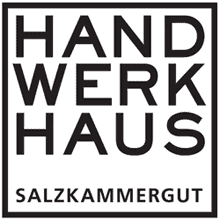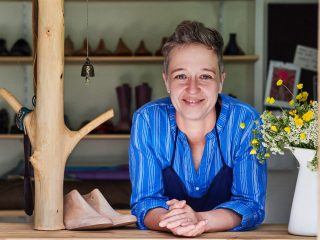With hands and feet
Working in a sports shop, one day Bernadette Baldauf held a “bar” in her hands for the first time to remove padding from shoe insoles. This pub, the characteristically curved shoemaker's knife, looked promising and made her curious about the craft behind it. Since then, Bernadette has dedicated herself to shoemaking in all its facets. She learned the now rare craft of bespoke shoemaking at a well-known traditional company in the first district of Vienna. In 2021 she returned to her home town of Kleinarl and opened her own workshop, "Die Schusterei". This is where fine and unique trousers are created, which accompany and adorn their wearers for many years. The initial curiosity turned into a fascination that continues unabated to this day.
"Put on your red shoes and dance the blues". David Bowie also knew that there is a shoe for every mood and every occasion. Shoes often tell stories, embody an attitude towards life, testify to casualness or elegance, symbolize status, rebellion, glamor or sex appeal. Shoes are also contemporary witnesses. From the turn of the 20th century, shoes were no longer only used for functionality and protection of the feet, even outside of the privileged upper class, shoes became part of fashion. Danced ankle strap pumps are the epitome of the wild 20s, from the 50s the shoe trends became more short-lived, in the 60s people preferred brightly colored and plateau, in the 80s
For years, leggings and baggy shirts were worn with “sneakers”, which are still popular today.
It is not known exactly when making shoes became a craft, but 4000 years ago making shoes was considered a respected trade in Egypt. And to come back to the "red shoes", in ancient times red sandals were reserved for the Roman emperor. The Middle Ages are considered to be the heyday of footwear. Heels were invented, the first welted models were created. During this time, the length of the toes of the shoes also provided information about social class, because clothing was the instrument used to visualize belonging to a social class, i.e. ultimately to exercise social control. The "beak length" of the shoes was a status symbol:
Princes were entitled to 2,5 feet, i.e. a proud 76 cm (!) beak length, knights had to be content with 1,5 feet.
Bespoke shoes were the norm up until the end of the 19th century. Shoes were made by the shoemaker. This “normality” ended with the industrial revolution and the
large-scale manufacture of ready-made goods. Now made-to-measure shoes have become something special.
... more in the Testimonial 0 - magazine for history, present and future © Hand.Werk.Haus Salzkammergut (available from Hand.Werk.Haus)



